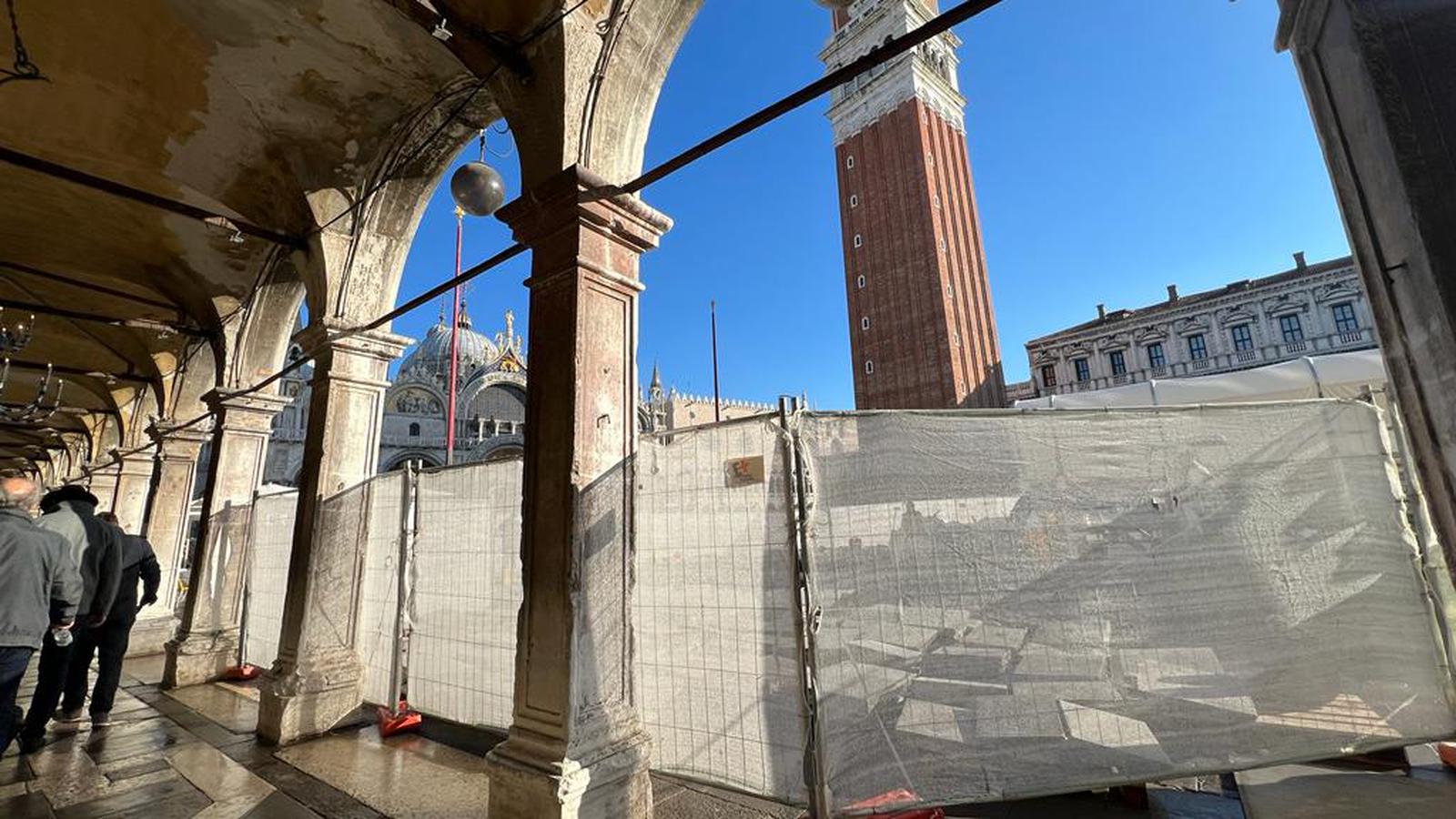Piazza San Marco
, the incredible square where Sist’Art Gallery overlooks, is one of the best-known places in the world: steeped in religious, commercial and political history, in art and culture. The role of the square has changed over the years, adapting to the challenges that Venice had to face, but still reaming the beating heart of the city. Unfortunately, the square is located in one of the lowest areas of Venice - just 80cm above the sea level – and for this fact it is often flooded by the high tide.
The phenomenon of the so-called
“high tide”
is an inconvenience for the whole city, as it affects commercial activities and citizens in everyday life, as well as the city-lagoon. Specifically, the flooring and the historical buildings were designed to be involved by water and to welcome the tidal flows, but today are in danger because facing new important challenges.
Due to
climate changes
and modifications to the hydrodynamics of the lagoon, this phenomenon has become increasingly frequent and consistent.
One of the projects to intervene on this problem has been the
MOSE
. Conceived at the end of the 80ds and implemented starting from 2003: a system of mobile bulkheads located at the three inlets that connect the Venice lagoon with the Adriatic Sea, capable of rising in cases of high tide in order to protect the city.
This project is very useful but at same it brings some problematics. First of all, the
stratospheric costs of put the barriers into operation
and their maintenance, running between 200 and 300 thousand euros any time the Mose is raised.
Furthermore, the project was conceived to be activated in exceptional cases of high tide, but the use intended today has a higher frequency. In fact,
the Mose will come into operation any time the tidal pick previewed is above 110cm
– it considered a sensitive altitude as it affects different areas of the city.
Ultimately, the work carried out to implement the barrier system, has created new imbalances in the sea/lagoon hydrodynamics and in the ecosystem.
Pros and cons aside,
Piazza San Marco remains a weak point, being flooded as soon as the tide exceeds 80cm
. For this reason, the Superintendency of Public Works has entrusted Venezia Nuova Consortium with the
construction of a huge project to protect the square
.
This was divided into two phases: first, the
safety of the Basilica of San Marco
, through the
construction of a barrier made of special and resistant glass
, in order to prevent water from entering the building. The second phase consists in the
creation of tunnels, underground pipes and valves, capable of containing the tide water
. When the tide rises, the water enters this system and is then released when the tide falls. With this intervenient, the Square should remain completely dry on the surface. The project envisages a maximum capacity that can withstand up to 110cm of tide, the altitude at which the Mose should be raised.
To realize the project, the square has been divided into small constructions sites, with the aim to not completely close the walkway. In fact, to work underground the flooring had to be raised, being careful not to create lesions and avoiding possible breakages to the existing pipes. There has also been a temporary “landscape” damage and economical for the various historic merchants and cafés facing the works in progress.
The end of the works is scheduled by spring / summer 2024, at the beginning of the summer tourism season.
Our interpretation, as merchants and inhabitants of the Square, is that we are facing operations that attempts to “patch up” the problem.
In fact, the high tide phenomenon affects the entire lagoon, and solutions must be sought at the roots of the phenomenon itself. We hope that in the future, these very useful monument protection works will also be accompanied by research and interventions involving the entire lagoon, through the analysis of its constant state of change and with an approach that tend to adapt to it, as has always happened throughout history.

